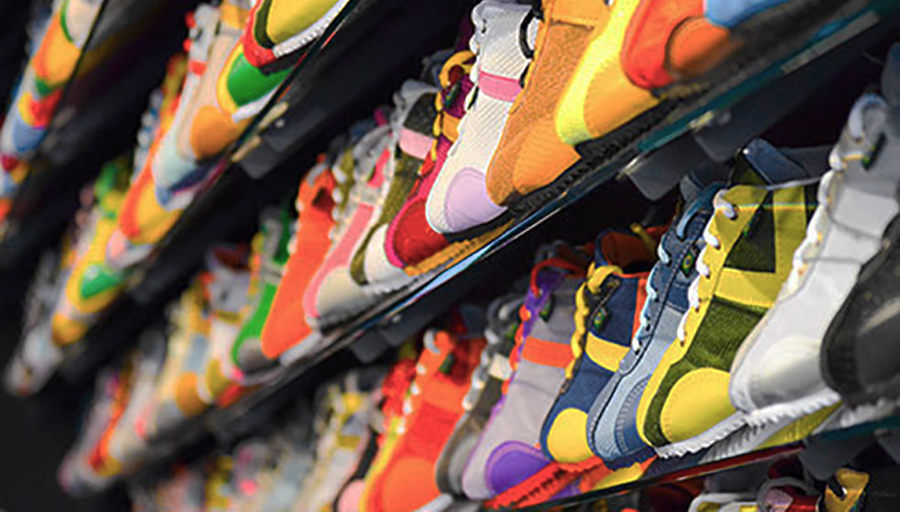Athletic footwear sales declined in the mid-single-digits in the third quarter while activewear saw a low single-digit increase in the period, according to point-of-sale data from The NPD Group.
According to Matt Powell, VP, senior industry advisor, sports at NPD, athletic footwear sales in July were down in the high- single-digits then declined in the high-teens in August before climbing in the mid-teens in September. September’s gain was likely due to the delayed back-to-school season as some business shifted out of August and into September. “Looking at weekly dollar sales compared to the same weeks last year, September grew each week compared to the same period last year; however, August still generated higher weekly sales volumes than September further supporting this shift,” he continued.
Among genders in athletic footwear, women’s saw a slight increase while men’s had a low-single-digit decline and kids’ were down in the low-teens for the quarter.
By channel, sales at mid-tier department stores dropped in the high-teens and shoe chains in the high-single-digits. Athletic specialty/sporting goods had a slight decline. Premium department stores had a mid-single-digit increase.
Looking at major athletic footwear brands:
- Nike posted a low single-digit increase for the quarter;
- Jordan declined slightly giving back some of the gains it achieved in the second quarter;
- Converse sales were down more than 30 percent;
- Adidas sales dropped in the high-teens;
- Reebok sales were flat for the quarter;
- Skechers’ footwear was down in the mid-teens;
- New Balance and Asics declined in the high-singles;
- Vans dropped more than 25 percent;
- Under Armour dropped in the mid-teens;
- Brooks sales grew more than a third;
- Puma increased over 20 percent;
- Hoka improved more than two-thirds, and
- On Running more than doubled.
Category winners — hiking/trekking and cold weather boots, both had substantial sales increases. “This bodes well for the fourth quarter in these categories,” said Powell.
Sport lifestyle shoes declined in the low-single-digits on Jordan weakness. Running declined in the low-single-digits, representing its best quarterly performance. Skate shoes were down 25 percent. Basketball dropped in the high-teens representing about 3 percent of overall athletic shoes sold.
Top-selling athletic shoes for Q3 in dollars were Nike Air Force 1 Low, Nike Air Max 270, Nike Revolution 5, Nike Air Max 97, Nike Air Max 90, Nike Air Vapormax Plus, Jordan XII Retro, Adidas NMD R1, Nike Air Max Excee, and Vans Ward.
Activewear highlights include a low-single-digit increase in the quarter led by women’s activewear, up mid-single-digits. Men’s grew in the low-single-digits and kids declined in the mid-single-digits. Activewear sold through department stores dropped about 10 percent. Athletic specialty/sporting goods grew in the high-single-digits.
In terms of brands, the aggregate of all retailers’ private brands is the largest “brand” in activewear, and sales were up more than 20 percent.
In the third quarter, Nike and Under Armour’s Activewear grew in the mid-single-digits; Adidas declined in the low-single digits; Puma grew more than 20 percent; Hanes sales were up more than 20 percent; Fruit of the Loom and Champion both declined.
Outerwear tops and knit shirts declined in the low-teens for the quarter. Socks were down in the mid-single-digits. Total pants were up in the mid-single-digits, and sweatshirts grew in the mid-teens. Underwear bottoms increased about 20 percent, and bras grew in the low-teens.
“I expect both the athletic footwear and activewear markets to see soft declines in Q4 though there will be some bright spots as consumers buy products to meet their current needs,” said Powell.









